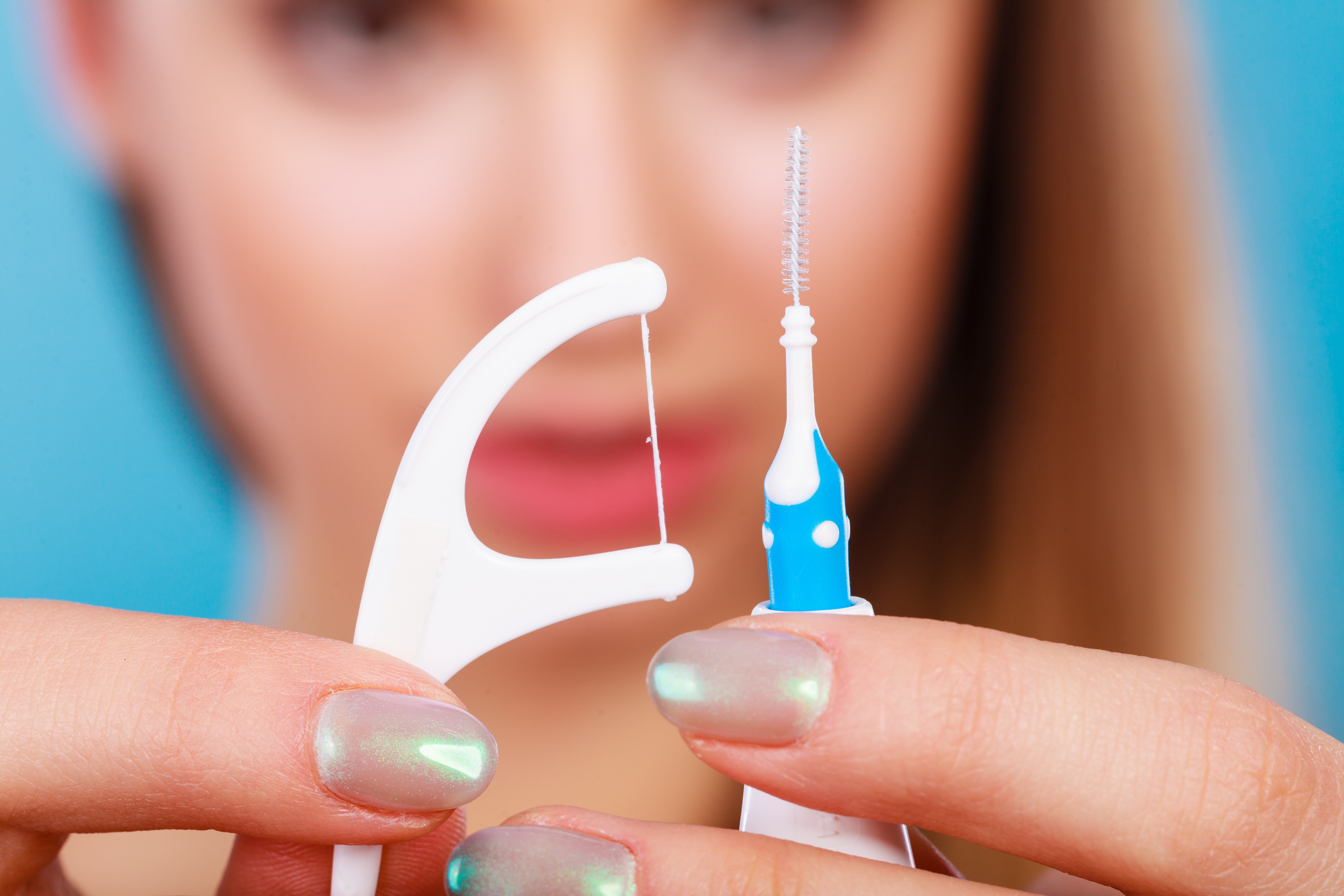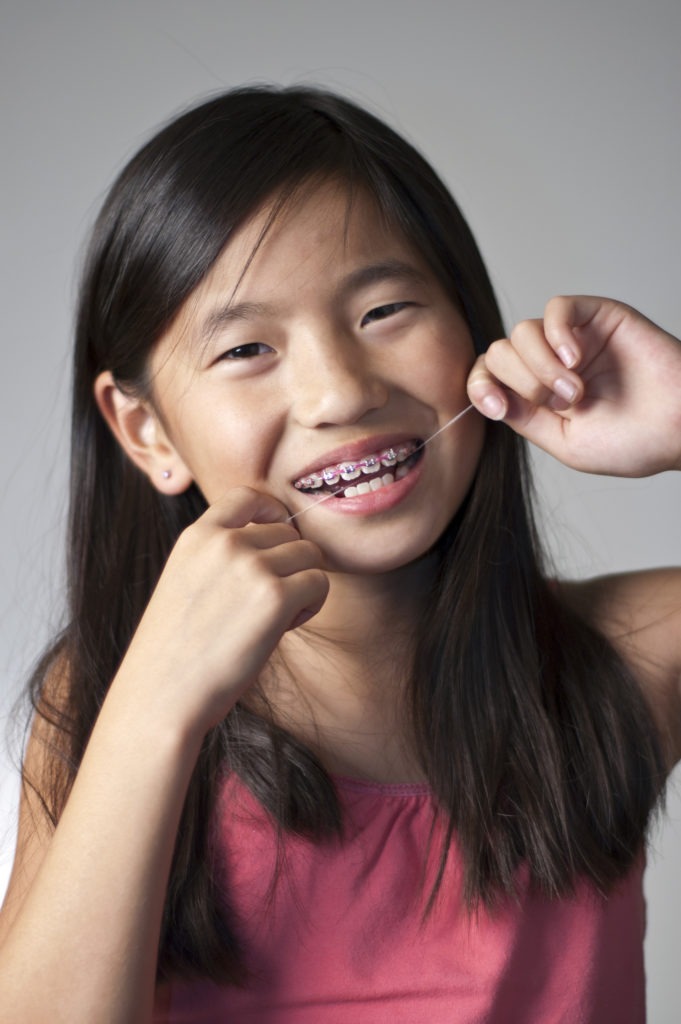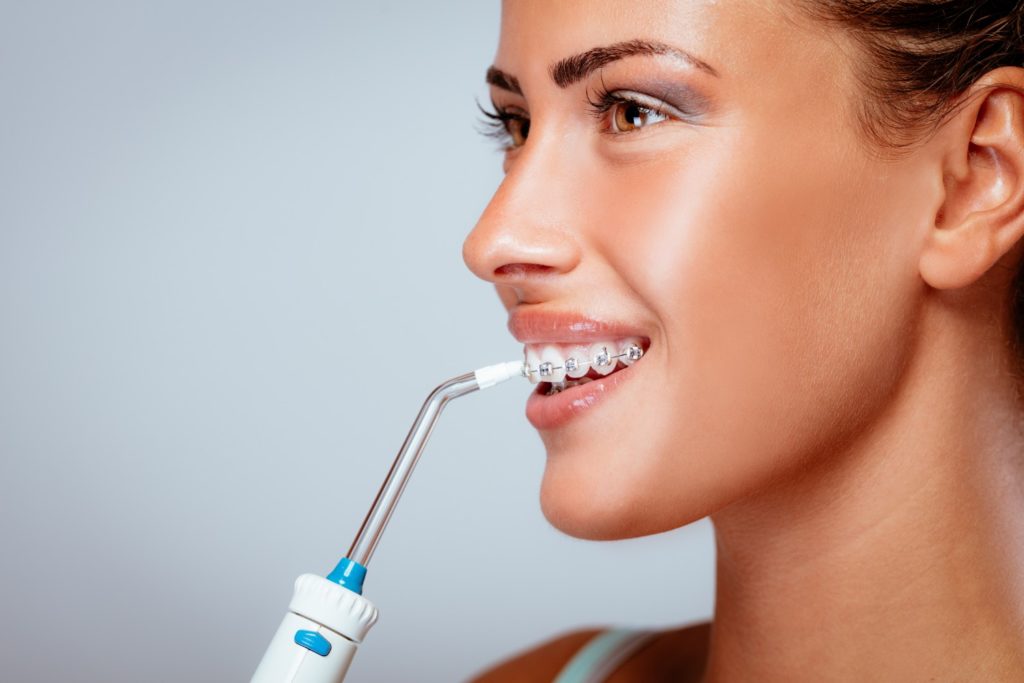Flossing is an important oral hygiene practice, but it takes more time and patience when you’re wearing braces. In order to keep your teeth and gums healthy throughout your treatment you will need to brush at least three times per day (after meals and before bed) and floss once per day, along with maintaining regular dental cleanings with your dentist. Flossing is the only way to remove plaque that is in the hidden crevices between your teeth.
Here at Dudley Smiles, we believe that getting the smile of your dreams should be a fun and comfortable experience. Our orthodontist, Dr. Silas Dudley, is consistently voted one of Seattle’s top orthodontists, and our friendly staff will make you feel like part of the family. Since flossing with braces can be tricky, we’ve put together this guide below, so you can get the hang of it with a little practice (and patience).
Flossing with Braces
The biggest thing about flossing with braces is to take your time and do it correctly. You don’t want to snap the floss down on your gums. Instead, be gentle. Be aware, though, when you first begin flossing around your braces, your gums may bleed a little regardless of your carefulness. The new appliance gives them some initial inflammation. If the bleeding does not go away after the first few times, let us know.
Rinse first
Before you begin, you should rinse your mouth out with water to flush any loose piece of food from your mouth.
Floss once a day
Floss at least once per day if you have braces. Ideally, it is best to floss at night, prior to bedtime, to make sure your teeth are clean. Be sure to floss all off your teeth and not just the ones you can reach.
Use waxed floss
While there are many types of floss, the standard waxed floss you find in the store should be fine. Unwaxed floss has a tendency to shred and could get caught in your braces. Additionally, there are different sizes of floss, so talk to your dentist to see what he or she recommends for your mouth.
Use the right amount
While the amount varies based on the size of your mouth, most recommendations say 18 inches should suffice.
Thread it carefully
Parents must do the flossing for children who cannot thread the floss under the main wire of their braces. Carefully thread the floss under the main wire. Make sure there is enough slack to grab in each hand. Grab one end of the floss in each hand and wrap the ends around your index fingers.
Slide between teeth
Slide the floss between the teeth all the way to the gumline. Make sure it rubs against the insides of both teeth. Be gentle while moving it up and down.
Remove and repeat
Pull out food particles or plaque, remove, and move on to the next pair of teeth. Unwrap clean floss from around your fingers as you go. Floss between every set of teeth on the top and bottom of your mouth. Also floss behind your back teeth.
Helpful products
Don’t avoid flossing during treatment because of the difficulty. There are a number of other dental products available to help braces patients with their flossing needs.
Floss Threader
A floss threader is a simple tool to help you thread dental floss into otherwise difficult areas. It is a piece of stiffened nylon with a loop. Pull out about 18 inches of your standard waxed floss. Insert one end of the floss about five inches through the loop of the threader. Insert the tip of the threader under the main wire of your braces and pull the floss through. Once in position, grab the floss in your hands and floss between the teeth as you normally would. Pull the floss out and repeat with the same threader.
Water Flosser
A water flosser is a handheld device that uses a pulsating stream of water to clean. The water, like traditional floss, removes food and plaque from between teeth. Dentists recommend them to be used as a compliment to flossing, not in place of flossing, as they can be really helpful for those difficult-to-reach places.
A few other products are:
- Super floss– stiffer than normal floss and can make threading between braces easier
- Interproximal brushes-small spiral brushes with bristles
- Dental tape- a specialty type of thin and wide floss
Dudley Smiles is here to keep you smiling
At Dudley Smiles, we understand flossing during braces treatment can be difficult, and we are here to support you every step of the way. Your healthy smile is as important to us as you are! Flossing is an essential part of taking care of your teeth and gums, so if you have any questions, concerns, or are interested in an initial consultation, we want to hear from you.
With two conveniently located offices in Issaquah and Kent, we make appointments easy, and our experienced staff gets you in and out as quickly as we can. See you soon!


